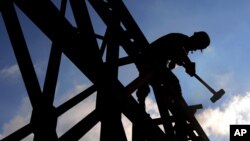A country’s infrastructure is the sum of its roads, power stations, dams, desalination plants and water delivery systems, airports, railroads, ports, bridges, hospitals. A well-functioning infrastructure fuels a country’s economic and social development. Yet, according to the 2010 World Economic Forum's Positive Infrastructure Report, the world faces a global infrastructure deficit of 2 trillion dollars per year over the next 20 years.
In mid-September, Secretary of State Hillary Clinton hosted the Global Infrastructure Conference, a one-day high-level forum bringing together international government and business leaders to develop sustainable solutions for meeting the world’s fast-growing infrastructure needs.
“We are living through a transformative period in history,” said Secretary Clinton. “From Asia to South America, Hundreds of millions of people are being lifted out of poverty, benefiting from higher living standards:”
“But it also puts a major strain on infrastructure – the roads they drive on, the electric grids that power all those new appliances, the mobile networks that connect their apps. And it puts a strain on our natural resources – our water, our air, our energy.”
As a result, by the year 2020, global construction spending will grow from 6 trillion dollars per year today to nearly 9 trillion. “That growth represents enormous demand, both for traditional roads and bridges, and for the smart, technology-enabled infrastructure of tomorrow,” said Secretary Clinton.
Investment in infrastructure goes far beyond just stimulating the economy, said Secretary Clinton. “Clean water and sanitation save lives. . . . Access to the internet gives people a window on the world. . . . High-tech traffic management systems cut down on commutes, make roads safer, and let people spend more time both at work and at home,” she said.
“How we in the world manage this unprecedented growth will determine what our economies, societies and all of us will look like in the years to come,” said Secretary Clinton.
“It’s a great challenge as well as a great opportunity to build a cleaner, healthier, more prosperous future together, and we are excited by what it can mean in improving the quality of life and the opportunities for hundreds of millions of people throughout the world.”

















